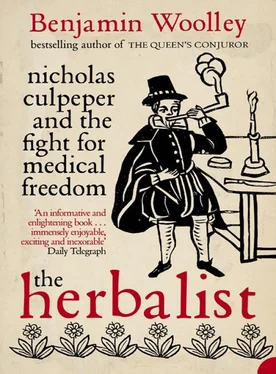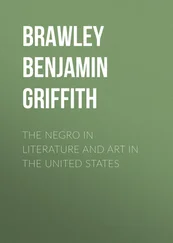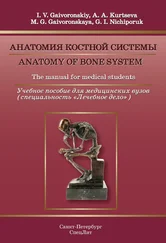Let those Women that desire Children love this Herb, ’tis their best Companion, their Husband excepted.
The Herb fried with Eggs (as is accustomed in the Spring time) which is called a Tansy, helpeth to digest, and carry downward those bad Humours that trouble the Stomach: The Seed is very profitably given to Children for the Worms, and the Juice in Drink is as effectual. Being boiled in Oil it is good for the sinews shrunk by Cramps, or pained with cold, if thereto applied.
Also it consumes the Phlegmatic Humours, the cold and moist constitution of Winter most usually infects the Body of Man with, and that was the first reason of eating Tansies in the Spring. At last the world being overrun with Popery, a Monster called Superstition perks up his head … and now forsooth Tansies must be eaten only on Palm and Easter Sundays, and their neighbour days; [the] Superstition of the time was found out, but the Virtue of the Herb hidden, and now ’tis almost, if not altogether, left off.*
Tansy has a tall, leafy stem, two or three feet high, with ferny foliage and flowers like golden buttons. 1Maud Grieve describes it as having ‘a very curious and not altogether disagreeable odour, somewhat like camphor’. The name probably comes from the Greek Athanaton , meaning immortal, either because it flowers for so long, or because of its use in ancient times to preserve corpses. It was said to have been given to Ganymede (‘the most beautiful of mortals’, carried off by Zeus to Olympus to serve as cupbearer and catamite) to make him immortal.
The herb was long associated not only with immortality but birth, hence the link with Easter, when, according to Grieve, ‘even archbishops and bishops played handball with men of their congregation, and a Tansy cake was the reward of the victors’. Richard Mabey, echoing Culpeper, writes that its original medicinal use at Easter time was to counteract the ‘phlegm and worms’ arising from the heavy consumption of seafood during Lent.
Though tansy has a strong, bitter taste, the cake was sweet. According to a traditional recipe, it was made by adding to seven beaten eggs a pint of cream, the juice of spinach and of a small quantity of tansy pounded in a mortar, a quarter of a pound of Naples biscuit (sponge fingers similar to macaroons, but made with ground pine nut kernels rather than almonds), sugar to taste, a glass of white wine, and nutmeg. The ingredients were combined, thickened in a saucepan over a gentle heat, poured into a lined cake tin, and baked. 2
A dark, gnarled yew stood next to the lych-gate, poisoning with a drizzle of noxious needles anything that grew beneath it. Rose bushes still in flower were scattered across the graveyard, planted, according to local tradition, by the betrothed on the graves of their dead lovers. A mound of fresh earth marked the spot where, a few days earlier, Maurice Sackville, the late rector of Ockley, had been interred. This was the scene beheld on 15 September 1615 by the Revd Nicholas Culpeper, Sackville’s hastily-appointed successor. He had arrived just four days after Sackville’s funeral from his old post as vicar of nearby Alciston. He was in his mid-thirties and, for a country parson, uncommonly well educated, boasting a degree from the University of Cambridge. 3
Ockley was a modest but busy parish on the border of the counties of Surrey and Sussex, straddling Stane Street, the Roman road that still acted as the main thoroughfare from Chichester on the south coast to London. The church itself was a quarter of a mile from the village, perched on a hill, next to the remains of a castle and Ockley Manor, owned by Nicholas’s cousin and patron Sir Edward Culpeper. 4
Nicholas and Sir Edward were from branches of the same family that was joined three generations back, part of a voracious dynasty that grew like white bryony through the counties of Sussex, Kent, and Surrey. The origin of the Culpeper name is obscure. Some have speculated that it derived from the place where the first family members settled, perhaps Gollesberghe in Sandwich, Kent or Culspore in Hastings, Sussex. To most, however, it was more suggestive of politics than geography. ‘Cole’ was a prefix meaning a fraud, as in cole-prophet, a false prophet, or ‘Colle tregetour’, a magician or trickster mentioned by Geoffrey Chaucer in his poem The House of Fame. 5Colepeper, one of innumerable spellings, would therefore mean a false pepperer, someone trading illicitly as a grocer outside the Fraternity of Pepperers, the guild incorporated in 1345 which later became the Grocers’ Company. Or the ‘pepper’ could simply refer to the herb’s association with offensiveness. Jack Straw, a supposed leader of the fourteenth-century Peasants’ Revolt, was described by a contemporary writer as a ‘culpeper’, meaning mischief maker. 6
Elements of the family had certainly lived up to this interpretation of the name. Wakehurst, the family’s main seat in Sussex, had come to the Culpepers after the daughters of its original owners were abducted by brothers Richard (1435–1516) and Nicholas (1437–1510). A grandchild of their elder brother John, Sir Thomas Culpeper, was beheaded in 1541 for treason, accused of being the lover of Catherine Howard, Henry VIII’s fifth wife, herself the daughter of Joyce Culpeper, Thomas’s sixth cousin, once removed.
By the early seventeenth century, the leading Culpepers were eager for respectability. Edward Culpeper, the current occupant of Wakehurst and the great-great-grandchild of Richard, had risen to become a Sergeant-at-Law (a high-ranking barrister). But in those days, lawyers, like physicians and merchants, were not considered gentlemen. Titles and land were the real currency of social rank, and Edward was ruthless in his pursuit of both. In 1603, he bought himself one of the new knighthoods that James I sold on his succession to the English throne in order to finance an opulent court. Through legal action as well as acquisition, Edward also enlarged his estate at Wakehurst into one of the most extensive in Sussex, and built an impressive mansion in the middle of it to show off his new-found status. Among the many lucrative plots for which he litigated was one of 120 acres at Balcombe, on the south-west border of his Wakehurst estate. This had been the principal possession of the Revd Nicholas Culpeper’s grandfather, leaving that branch of the family incurably reduced. Nicholas had inherited just £120 on his twenty-first birthday, enough to pay for his education at Cambridge University, where he received an MA in 1608. Thereafter he was dependent on the patronage of Sir Edward.
Now, as rector of Ockley, entitled to the living or ‘benefice’ generated by local church taxes, Nicholas could look forward to a comfortable, if undemanding, life. He had also become engaged to Mary, the twenty-year-old daughter of another rector, William Attersoll of Isfield, a village near Nicholas’s old parish of Alciston and within the same deanery or church administrative district. 7A month after Nicholas took up his position at Ockley, they were married at Isfield.
Nicholas’s first few weeks in the parish were busy with funerals. Coffin after coffin was carried past the old yew into the church yard, six before Christmas, a high number for a village with a population of a hundred or so. One of them contained Katherine Sackville, wife of the late rector, suggesting that both had succumbed to a disease passing through the village. Nicholas must have been concerned about the infection lingering in the rectory he and his new wife had so recently occupied. 8
Within the year, Nicholas too was dead, around the time of the first anniversary of his marriage to Mary, who was about to give birth to their first child. There is no record of what killed Nicholas, but there was a ready supply of possible causes. At around this time, the practice began of hiring old women – ‘ancient Matrons’ – to roam parishes as ‘searchers of the dead’, recording the number and causes of death for regularly published ‘Bills of Mortality’. There was some controversy about this practice. According to John Graunt, who started analysing these figures in the 1660s, people questioned ‘why the Accompt of Casualties is made’, since death was a divine, not a demographic, matter; its time preordained; its cause the instrument by which God’s will was performed. No intervention, physical or otherwise, could prevent it. ‘This must not seem strange to you,’ advised William Attersoll two years before his son-in-law’s death, ‘for the whole life of a Christian should be nothing but a meditation of death … You must consider that nothing befalleth us by chance or fortune, all things are ruled and guided by the sovereign providence of almighty God.’ 9
Читать дальше












